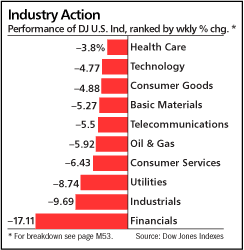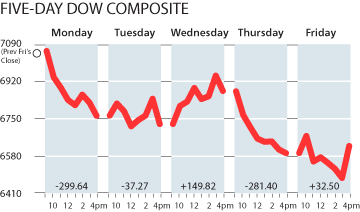PMI (Purchasing Managers Index)
Manufacturing grew in June as the PMI registered 50.2 percent (consensus was 48.7), 0.6 percentage point higher than the 49.6 percent reported in May. A reading above 50 percent indicates that the manufacturing economy is generally expanding; below 50 percent indicates that it is generally contracting.
A PMI in excess of 41.1 percent, over a period of time, generally indicates an expansion of the overall economy. Therefore, the PMI indicates the overall economy and the manufacturing sector are growing at this time. Ore stated, "The past relationship between the PMI and the overall economy indicates that the average PMI for January through June (49.3 percent) corresponds to a 2.6 percent increase in real gross domestic product (GDP). In addition, if the PMI for June (50.2 percent) is annualized, it corresponds to a 2.9 percent increase in real GDP annually."
ISM's New Orders Index registered 49.6 percent in June, 0.1 percentage point lower than the 49.7 percentage points registered in May. A New Orders Index above 51.6 percent, over time, is generally consistent with an increase in the Census Bureau's series on manufacturing orders (in constant 2000 dollars).
Seven industries reported increases during June: Computer & Electronic Products; Printing & Related Support Activities; Paper Products; Primary Metals; Miscellaneous Manufacturing; Food, Beverage & Tobacco Products; and Chemical Products. The industries that are reporting contraction in New Orders are: Wood Products; Electrical Equipment, Appliances & Components; Transportation Equipment; and Machinery.
Production
ISM's Production Index increased to 51.5 percent in June, an increase of 0.3 percentage point from the 51.2 percent reported in May. An index above 49.9 percent, over time, is generally consistent with an increase in the Federal Reserve Board's Industrial Production figures.
Of the industries reporting in June, seven registered growth: Printing & Related Support Activities; Computer & Electronic Products; Petroleum & Coal Products; Primary Metals; Food, Beverage & Tobacco Products; Chemical Products; and Fabricated Metal Products. The industries failing to grow in June are: Nonmetallic Mineral Products; Wood Products; Transportation Equipment; Electrical Equipment, Appliances & Components; and Machinery.
Definition
The Institute for Supply Management surveys more than 300 manufacturing firms on employment, production, new orders, supplier deliveries, and inventories. A composite diffusion index of national manufacturing conditions is constructed, where readings above (below) 50 percent indicate an expanding (contracting) factory sector. Export orders, import orders, backlog orders and prices paid for raw and unfinished materials are also measured, but these are not included in the overall index. (Institute for Supply Management)
Why Do Investors Care?
Investors need to keep their fingers on the pulse of the economy because it dictates how various types of investments will perform. By tracking economic data such as the ISM manufacturing index, investors will know what the economic backdrop is for the various markets. The stock market likes to see healthy economic growth because that translates to higher corporate profits. The bond market prefers less rapid growth and is extremely sensitive to whether the economy is growing too quickly and causing potential inflationary pressures. The ISM manufacturing data give a detailed look at the manufacturing sector, how busy it is and where things are headed. Since the manufacturing sector is a major source of cyclical variability in the economy, this report has a big influence on the markets. More than one of the ISM sub-indexes provides insight on commodity prices and clues regarding the potential for developing inflation. The Federal Reserve keeps a close watch on this report that helps it to determine the direction of interest rates when inflation signals are flashing in these data. As a result, the bond market is highly sensitive to this report.
Subscribe to:
Post Comments (Atom)



No comments:
Post a Comment